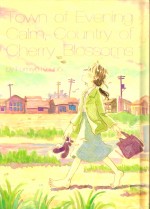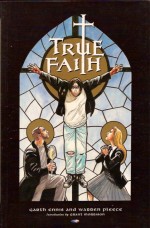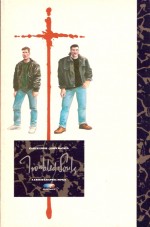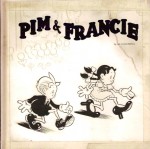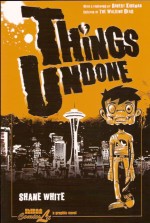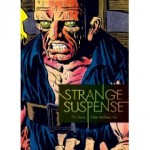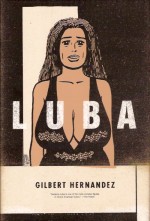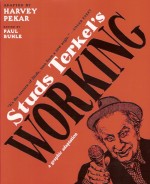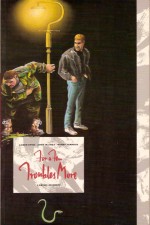
By Garth Ennis & John McCrea, with Wendy Simpson (Fleetway)
ISBN: 0-85386-208-8
After the moving odyssey of Tom Boyd in Troubled Souls and chilling sardonic disillusionment of True Faith, the third Crisis epic from Garth Ennis again broke entirely new ground with a mini-masterpiece of eternal fraternal comradeship and raucous, bawdy profanity that touched all the classic keystones of masculine comedy: women, booze, toilet humour and the trouble your best mates get you into …
For a Few Troubles More shows another, more joyous side of Belfast, and features the antics of Dougie and Ivor, two peripheral characters and drinking buddies from the story of Boyd, who stole centre-stage and ran off giggling with it (think “Rosencrantz and Guildenstern are Schmucks )
Dougie Patterson is getting married. His fiancé’s extremely imposing father insists on it. He doesn’t actually like Dougie but no grandchild of his is going to be born out of wedlock. It’s not so bad, really. The wayward lad loves Valerie, and his fearsome father-in-law-to-be is finding him both a job and somewhere to live. All Dougie has to do is learn to think before he opens his mouth and lose the bad influences in his useless life.
Beat mate Ivor Thompson is the fleshily overabundant epitome of a bad influence. Crafty, stupid, and a fabulist far too fond of the “Brilliant Ideaâ€, this failed terrorist (who shot himself in the foot on his first mission) is fresh out of prison and looking to make a little cash when his uncle Shuggie lets him in on a family secret: the elder Thompson runs the most diabolical Poteen still in the city. (Pronounced “Puh-Cheen,†an illicit, illegal and unwise homemade spirit made from things better left unsaid, inexplicably beloved by Sons of Erin everywhere. I tried some in 1975 and to this day my skull pounds and my vision blurs whenever I move my head too quickly).
With the wedding day looming and no-one better available, Dougie unwisely lets Ivor be his Best Man, stupidly forgetting his old pal’s passion for practical jokes, and the fact that’s he’s cursed by all the gods of good taste there have ever been.
Ivor’s a survivor. Nothing gets him down for long: not Shuggie’s sudden death, a gang of criminals who want the vast quantity of Poteen they were promised or an imminent beating by the biggest bully in Belfast. In fact it takes the return of his uncle as an entirely different kind of spirit to give him even a moment’s pause, and he’s determined that Dougie’s honeymoon will be one he’ll never forget…
This blend of viperish one-liners and classic slapstick shows all Ennis’s later themes in full display: friendship, male bonding, studied suspicion and mandatory disrespect of any authority that thinks itself sacrosanct. It is a paean of praise for the little guy, starring two of the most ordinary heroes ever seen.
Clearly the lads struck a chord, as they have periodically returned as the “stars†of the occasional series Dicks, but this first tightly disciplined slice of chaos is still, for me at least, their greatest moment – particularly because of the superbly evocative colour art of John McCrea and Wendy Simpson.
A riotous, uproarious tawdry delight for grown-ups with a sense of vulgar absurdity, these are not troubles you can do without.
© 1990 Fleetway Publications. All Rights Reserved.

